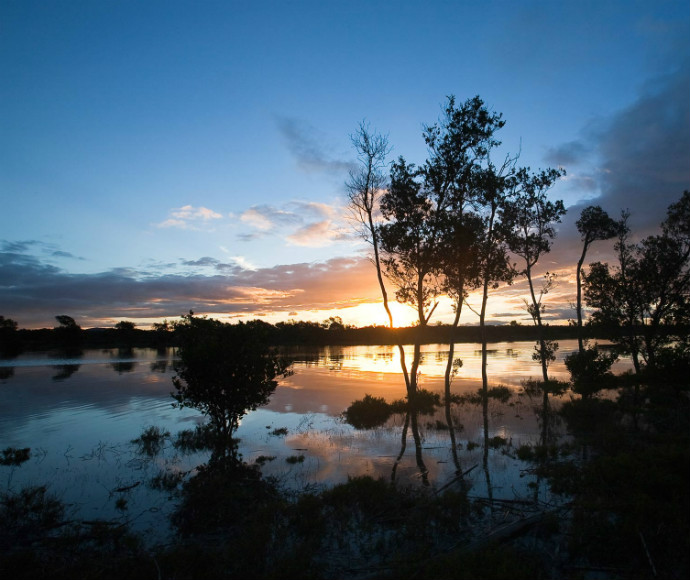The Hunter Estuary Wetlands Ramsar site is on the northern edge of Newcastle and is in 2 parts:
- Kooragang Nature Reserve (now part of Hunter Wetlands National Park) was listed under the Ramsar convention in 1984.
- Hunter Wetlands Centre was added in 2002.
Why these wetlands were listed as a Ramsar site
Countries that sign up to the Ramsar Convention can nominate sites to be listed as Wetlands of International Importance (Ramsar sites). The site must meet at least one of 9 internationally accepted criteria.
These wetlands have been listed as a Ramsar site because they meet the following criteria.
Criterion 2: Threatened species or ecological communities
The Ramsar site support nationally and internationally listed threatened species, including:
Criterion 4: Supports species at critical stage of their life cycle or provides refuge in adverse conditions
The site supports 112 species of waterbirds and 45 species of migratory birds listed under international agreements, including the great egret, cattle egret, terns, glossy ibis and white-breasted sea-eagle. These wetlands also provide refuge for waterbirds such as ducks and herons during periods of inland drought.
Criterion 6: Supports 1% or more of the population of waterbird species
The Hunter Estuary Wetlands Ramsar site regularly supports at least 1% of the population of the eastern curlew, and at least 1% of the population of the red-necked avocet.
How the site is managed
Management of this Ramsar site is guided by the following:
- the site’s Ramsar information sheet
- its ecological character description
- a plan of management for Hunter Wetlands Centre, which is on private land
- a plan of management for Hunter Wetlands National Park.
The Hunter Wetlands National Park plan of management incorporates Kooragang Nature Reserve.
Threats to the Ramsar site
The main threats to this site’s ecological character include:
- changes in tidal range due to dredging, drainage works and the installation and operation of flood mitigation structures
- changes in the freshwater/saltwater balance due to drainage works
- introduced animals such as dogs, foxes, cats and black rats, all of which prey on native birds
- introduced plants such as bitou bush, alligator weed, water hyacinth and pampas grass
- industrial development on adjoining land.
Changes in the tidal range and to the freshwater/saltwater balance have resulted in an expansion of mangroves and a decrease in saltmarsh, an important foraging and roosting habitat for migratory shorebirds.
